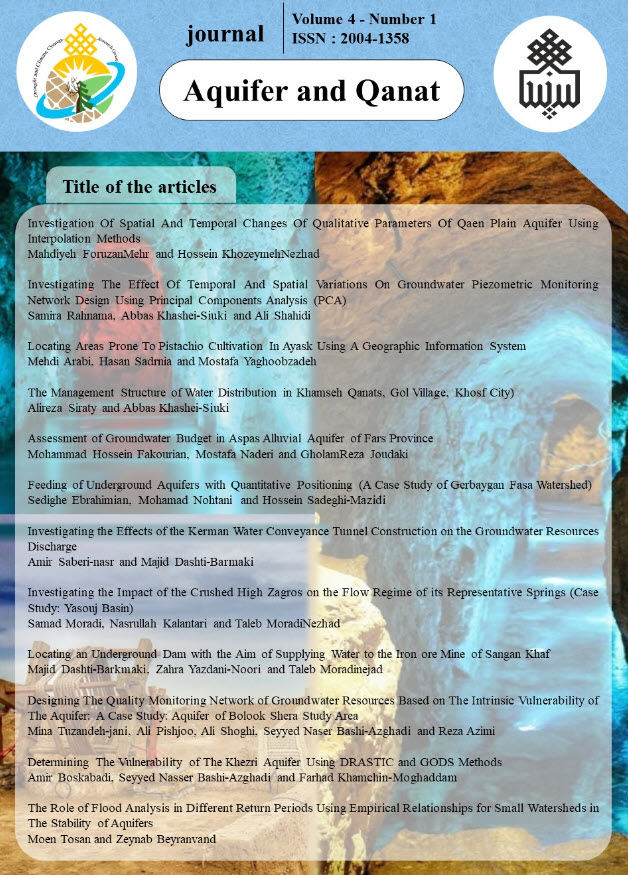Document Type : Original Article
Authors
1 Department of Water Science and Engineering, Faculty of Agriculture, Birjand University, Birjand, Iran
2 Assoc. Professor, Department of Water Science and Engineering, Faculty of Agriculture, University of Birjand, Birjand, Iran
3 Birjand University, Faculty of Agriculture
Abstract
Today, one of the problems with drinking water from groundwater is its quality. Many substances dissolved in water are undesirable. Minerals, gases, and organic matter dissolved in water can cause unpleasant colors, tastes, and odors. Some chemical compounds may be toxic, and some soluble organic components have been shown to be carcinogenic. Of course, it should be noted that not all water-soluble substances are undesirable, but the amount of desirable water-soluble substances is very small. In this study, the water quality of Birjand plain aquifer is measured using an indicator called groundwater pollution index (PIG). This index evaluates the quality of groundwater chemically. The PIG index quantifies the concentration measured in water samples according to the limit in the World Drinking Water Standards (WHO). For this purpose, zoning maps of chemical parameters affecting the PIG index including chlorine, sodium, potassium, calcium, magnesium, TDS, pH, bicarbonate, sulfate were prepared using Arc GIS software (10.3); Then PIG index calculations were performed in GIS software and groundwater pollution index map was drawn.According to the classification, 43.25% of the total aquifer area is low and insignificant pollution, 47.9% of the areas are moderately polluted, 8.22% of the aquifer is highly polluted and 0.63% is highly polluted. This indicates that the pollution of the aquifer of Birjand plain is moderate to chemical elements and failure to observe the optimal use of groundwater can increase pollution in the aquifer.
Keywords

